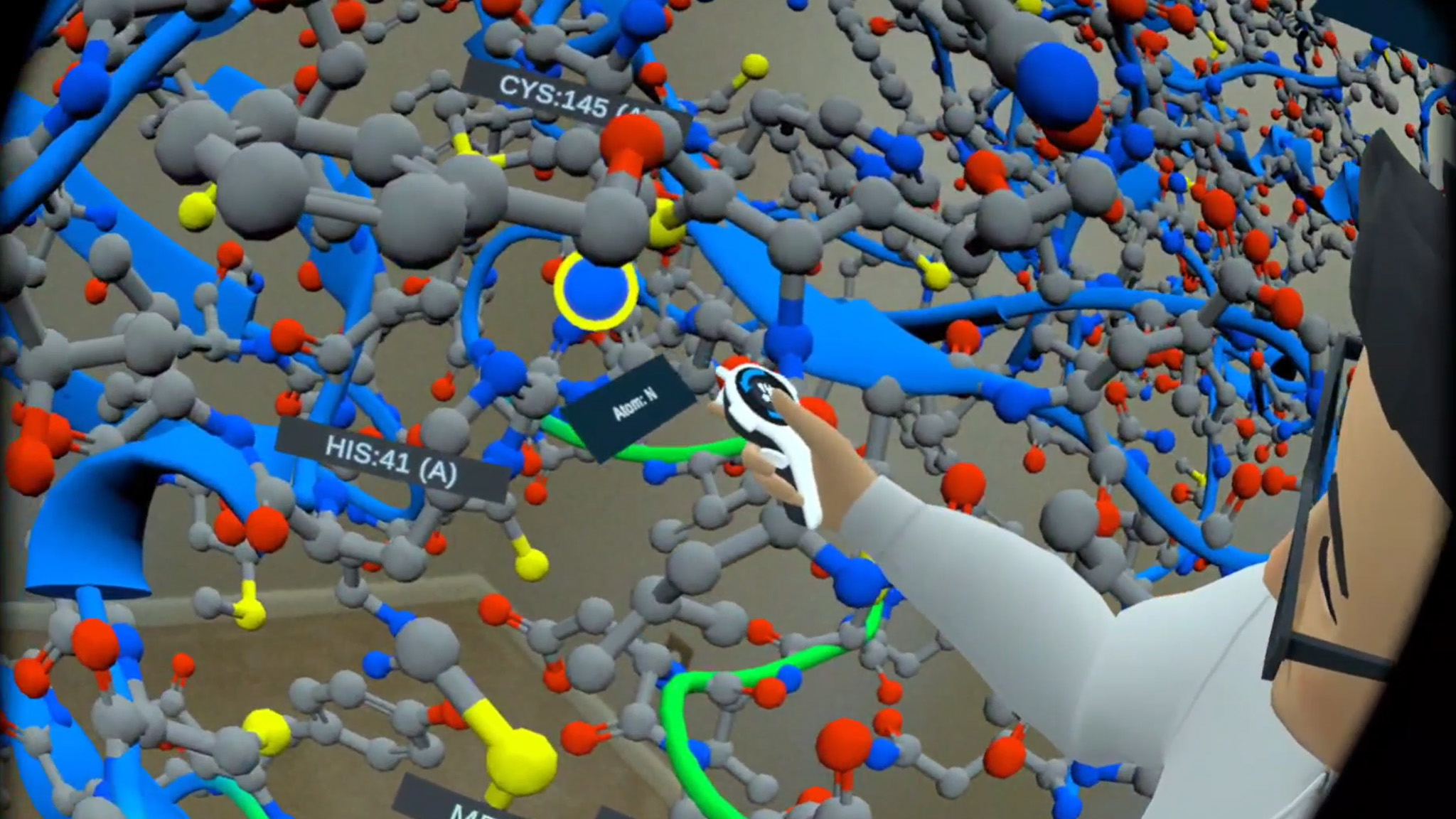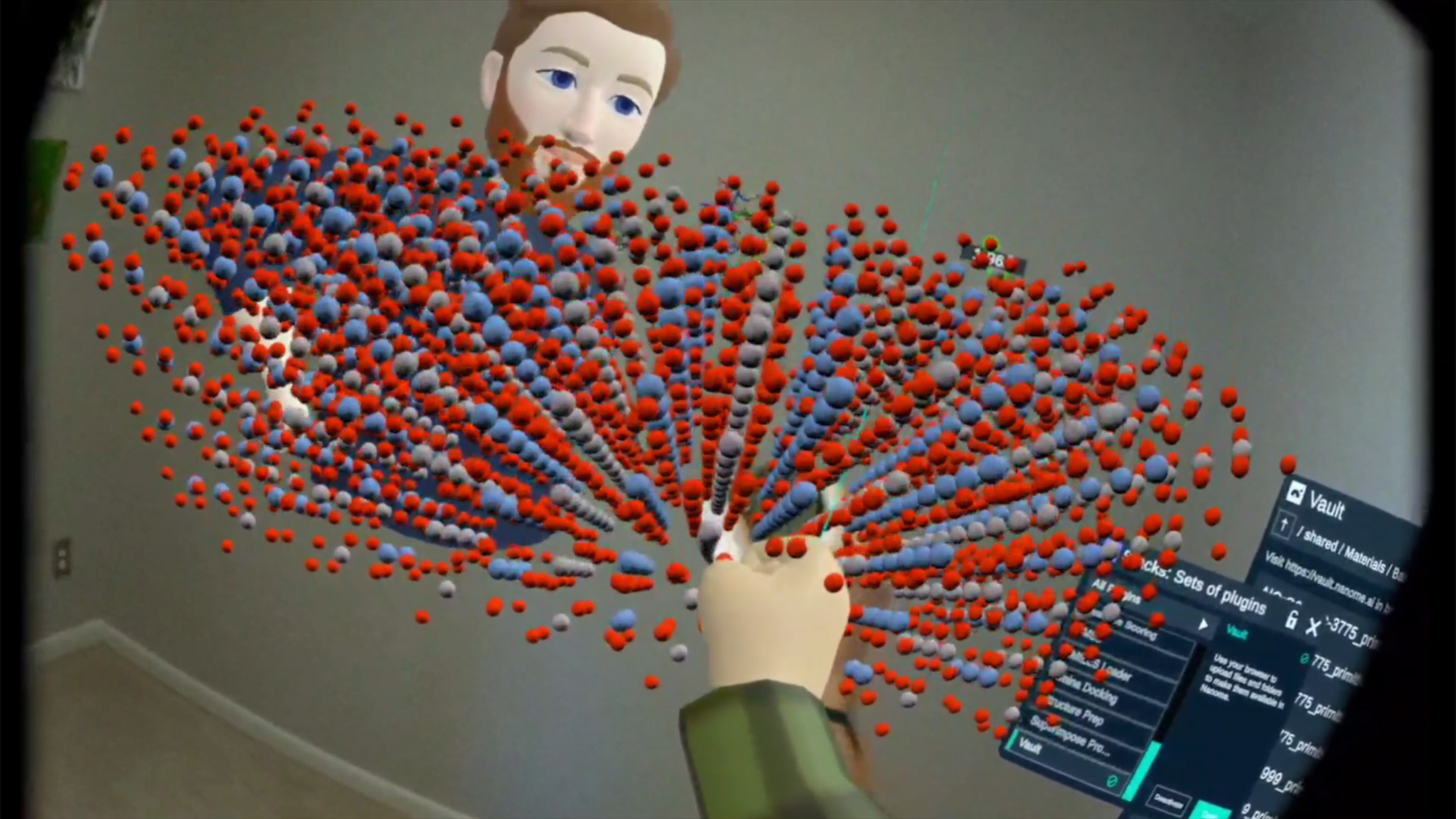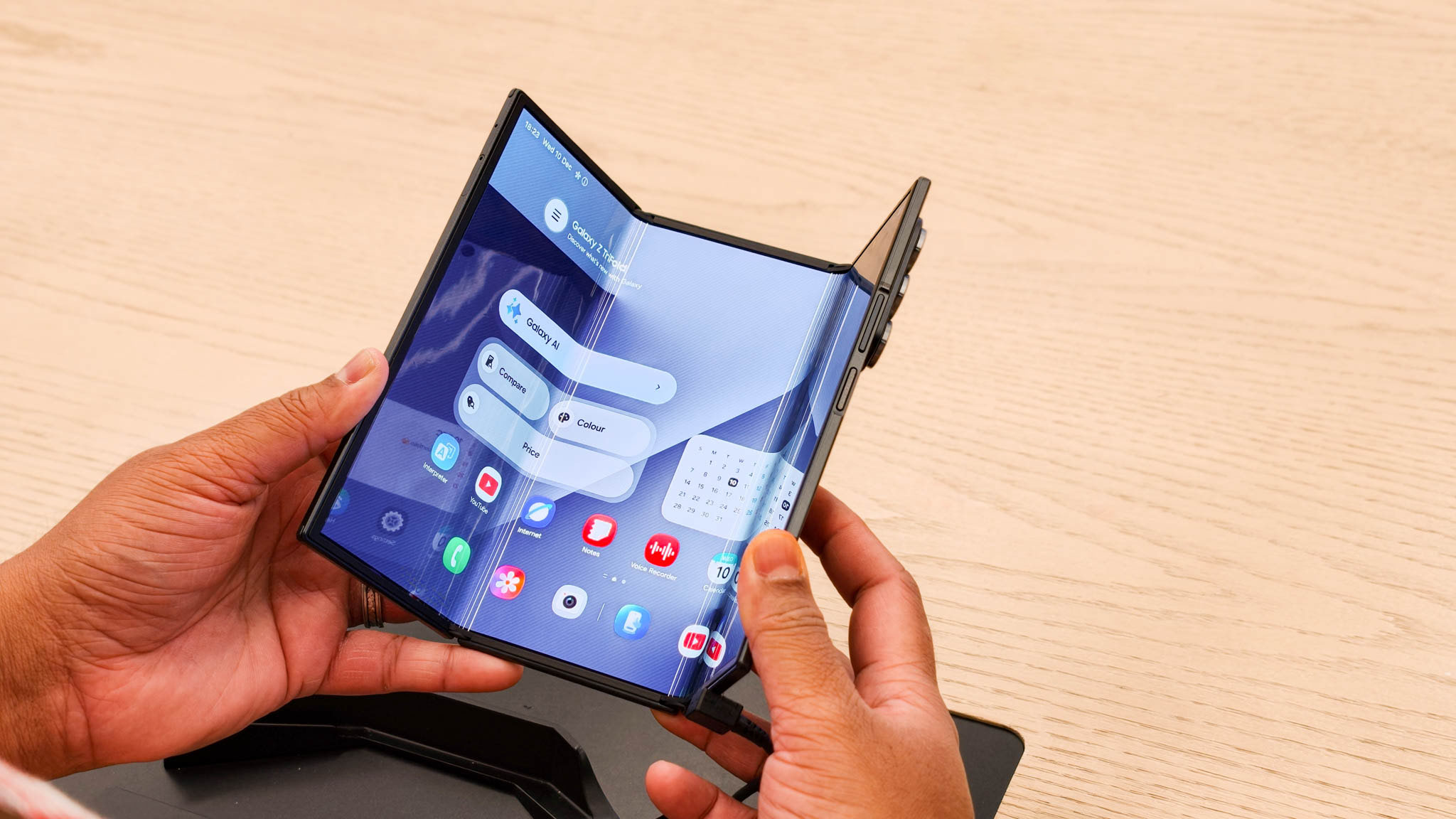I watched researchers use a Meta Quest Pro to solve the pandemic
It's precisely what a "business class" VR headset is really for.

It's not every day that you get to see just how intricate a molecule is with your own two eyes. That's particularly true for a virus that's as complex as SARS-CoV-2, the virus that caused the COVID-19 pandemic. Even more impressive is watching just how a pandemic can be solved by swapping out one atom to create a drug that stops a virus in its tracks.
That's why it was so amazing to spend time with the folks at Nanome, a VR app on the Quest 2 and Meta Quest Pro that makes it "easy" for researchers to experiment with intricate molecules to make better pharmaceuticals to help the world. While researchers have used expensive medical equipment to analyze and reconstruct proteins and other molecular structures for decades, they've all been done on a flat screen with a computer mouse that's not always the best tool for precisely picking points in a 3D model.
With VR headsets, researchers can actually step "inside" these models and manipulate them with the best tools we have: our hands. But this isn't some theoretical model that's just emerging. Research papers have already been written using these tools and could further help construct drugs that prevent pandemics in the future. That, at least in part, helps explain what it means to be a "business class headset."
Proteins, keys, and a molecular escape room

Grabbing, resizing, and rotating a molecular structure like the SARS-CoV-2 one is an almost priceless upgrade from the 2D versions of the same thing on a monitor.
Nanome is sort of what happens when you mix together Tiltbrush and Minecraft, an analogy made by one of the app's creators as he gave me a tour of the basic functions of the app. The first part of my tour taught me how to use the periodic table of elements to use any real-world element to build my own atoms, not unlike selecting from the table of available elements in Minecraft's creative mode.
But if starting from scratch is too much — or just isn't what you're going for in your molecular simulation — the app's Med Chem tool looks and works a lot like Tiltbrush's object selection tool, complete with the wrist-mounted navigation cube filled with examples of different molecular structures you can start from.
For someone like me who knows very little about atomic structures and what a researcher actually does with their time each day, it was eye-opening to get a look at this mysterious world so up-close and personal.
Grabbing, resizing, and rotating a molecular structure like the SARS-CoV-2 one is an almost priceless upgrade from the 2D versions of the same thing on a monitor. Keita Funakawa, Nanome's COO, demonstrated the differences between the two and showed just how easy it is to get an in-depth view thanks to Nanome's intuitive VR interface.
Get the latest news from Android Central, your trusted companion in the world of Android
While researchers spend "hours, days, or even months" grabbing and rotating these molecular structures with a mouse — a tool that's meant for interacting with 2D elements on a 2D monitor — there's a certain perspective that's quite literally lost in translation when interacting this way.
Big pharmaceutical companies aren't worried about the $1,500 Quest Pro price when it helps them better and more efficiently design a drug that's likely going to make the company billions of dollars.
Nanome lets researchers get a clearer view of the actual molecular structure because it allows them to actually perceive the depth and complexity that these models hold. Few tools are as precise as a pair of human eyes and hands, especially when it comes to studying something with a human brain.
More importantly, though, Funakawa points out that in biology “structure is function.” Being able to spatially understand the structure of an element or a virus is vital to understanding how to create the key that locks down a protein structure from doing the work it was made to do — a vital part of creating medicine that helps real people.
When I asked Funakawa about the price of the Quest Pro and whether it was justifiable or not, his response was pretty clear. While Nanome has been around for years now, a headset like the Quest Pro makes it better for several reasons.
Being wireless has always been a strength of the Quest line, and it means a researcher can more effortlessly take the headset on and off during their workday and just get work done instead of fiddling with a PC or a cable.
In biology, “structure is function.” Being able to spatially understand the structure of an element or a virus is vital.
The Quest Pro's controllers are just plain better than other controllers before them because they can not only track themselves — eliminating dead zones from previous Quest controller tech — but they are also high-precision instruments that give users the ability to pinpoint small objects and grab them.
The Quest Pro's headset design is far more conducive to a work environment than the Quest 2. Being a mixed-reality headset means you can still see around you with the headset on — something that's important in a lab environment — and capabilities like color passthrough mean you can feel like you're still seeing everything in the room around you while virtual objects also cohabit the space.
As far as the price is concerned, big pharmaceutical companies like Pfizer and Novartis — the latter the Nanome team worked with to develop a product that's actually useful for researchers — aren't exactly worried about a $1,500 piece of equipment (the Quest Pro's price) when it helps them better and more efficiently design a drug that's likely going to make the company billions of dollars.
The social quotient

Someone working in Australia could share their research breakthroughs with someone working in L.A. without one of them having to wake up at 3 AM.
You'll notice two Keitas in the above screenshot. That's because we're watching a spatial recording of the session that was taken earlier in the demo. Researchers often use audio recordings and written notes to help keep track of what's happening in their research. While these notes might sometimes be personal, there's a high likelihood that other colleagues will also share notes to better collaborate on a solution.
But what if you could just record all your notes, not just the audio portion, but walking through the molecular structure you just modified? That's next-level stuff because it uses more of the human brain to keep track of what's going on, and it means someone working in Australia could share their research breakthroughs with someone working in L.A. without one of them having to wake up at 3 AM.
Nanome utilizes Meta's avatar system, so users have a cohesive look with other social apps they use on the headset. In a more professional setting, it's highly likely that this avatar looks as close to your real-life self as possible. It also means people who are used to working with you physically — or just via Zoom calls — will immediately recognize you in VR.

It also means that researchers and other staff can work together in a virtual space on projects without having to share a monitor or a single viewpoint. In the 45-minute demo, I was in my guest bedroom while Funakawa and Nanome's CEO, Steve McCloskey, were together physically in the same meeting room at Nanome HQ in California. From my perspective, it just felt like we were all in the same room chatting with one another while the duo showcased what Nanome can do.
In many ways, this is akin to what a metaverse actually looks like. It's a virtual space that overcomes the physical boundaries of what we're typically used to in the real world. It's a way to both work and play without worrying about transportation, matching up schedules, or even bringing specialized equipment along for the ride.
Not just for drugs

The team at Nanome has a vision that "a billion scientists around the world [could] be doing cutting-edge research to help humanity in the metaverse."
McCloskey also took the time to show off some of Nanome's other features during the demo. While we're still looking at objects at the molecular or atomic level, this next demonstration was focused on how companies like Samsung and LG could use a product like Nanome on the Quest Pro to make better batteries for all sorts of devices.
Further than that, apps like Nanome can be used on headsets like the Quest Pro (or even the Quest 2) in classrooms to replace the traditional chemistry kid that schools have to buy for each student. Instead of spending $100 per student on a chemistry kit that only comes with a finite amount of pieces for students to assemble their own molecules, an app like Nanome allows for unlimited pieces for construction.
Not only that, but Nanome isn't just some Lego simulator that lets people mindlessly connect pieces together. This is a full simulation engine that creates scientifically-accurate simulations that can be used in real lab work. That includes measuring the tiny, tiny distance between atoms — which are fractions of the size of even the tiny electrical gates inside a computer processor — and seeing the real reactions of atoms when you swap one out for another.
While the Quest Pro isn't exactly cheap, an app like Nanome being on the Quest store means that powerful professional chemistry tools are being democratized for more people to use them than ever.
McCloskey, Funakawa, and the team at Nanome have a vision that "a billion scientists around the world [could] be doing cutting-edge research to help humanity in the metaverse." It's a bold vision, to be sure, but it also shows the power that tools like Nanome could give to everyday people.


